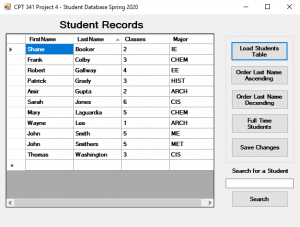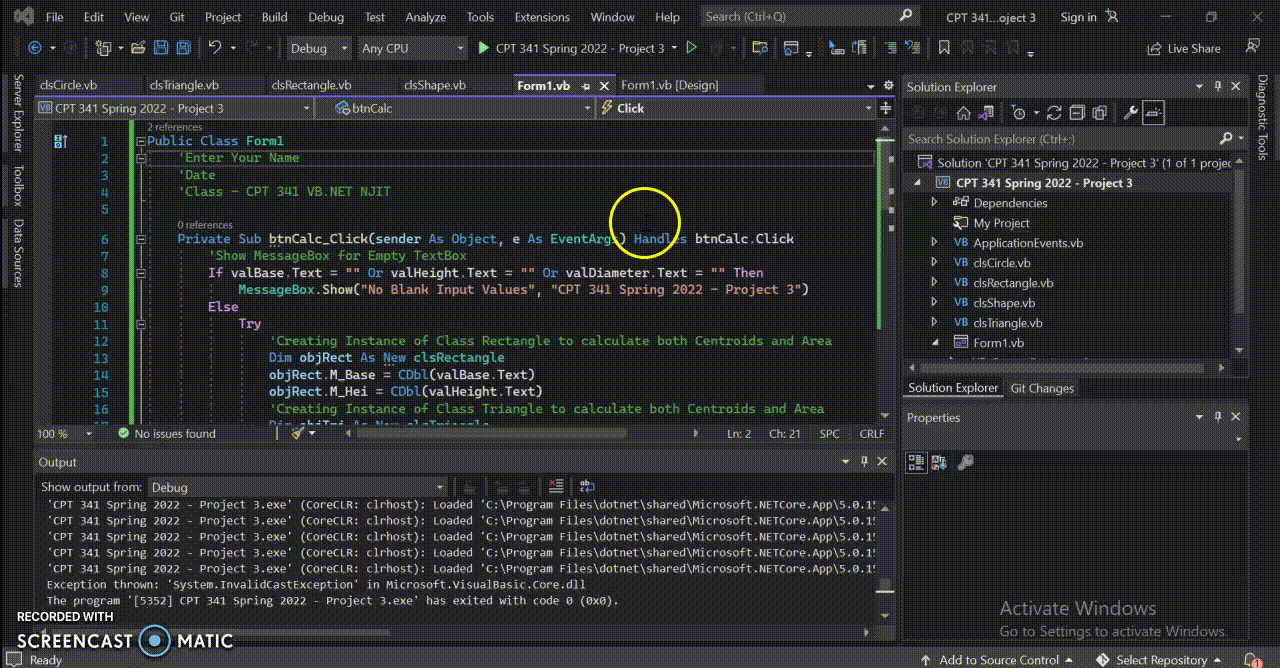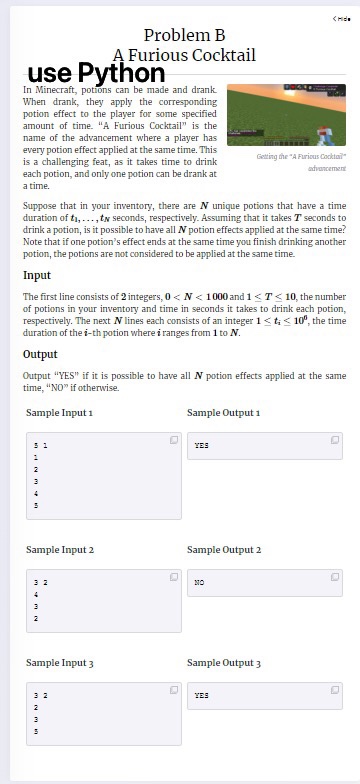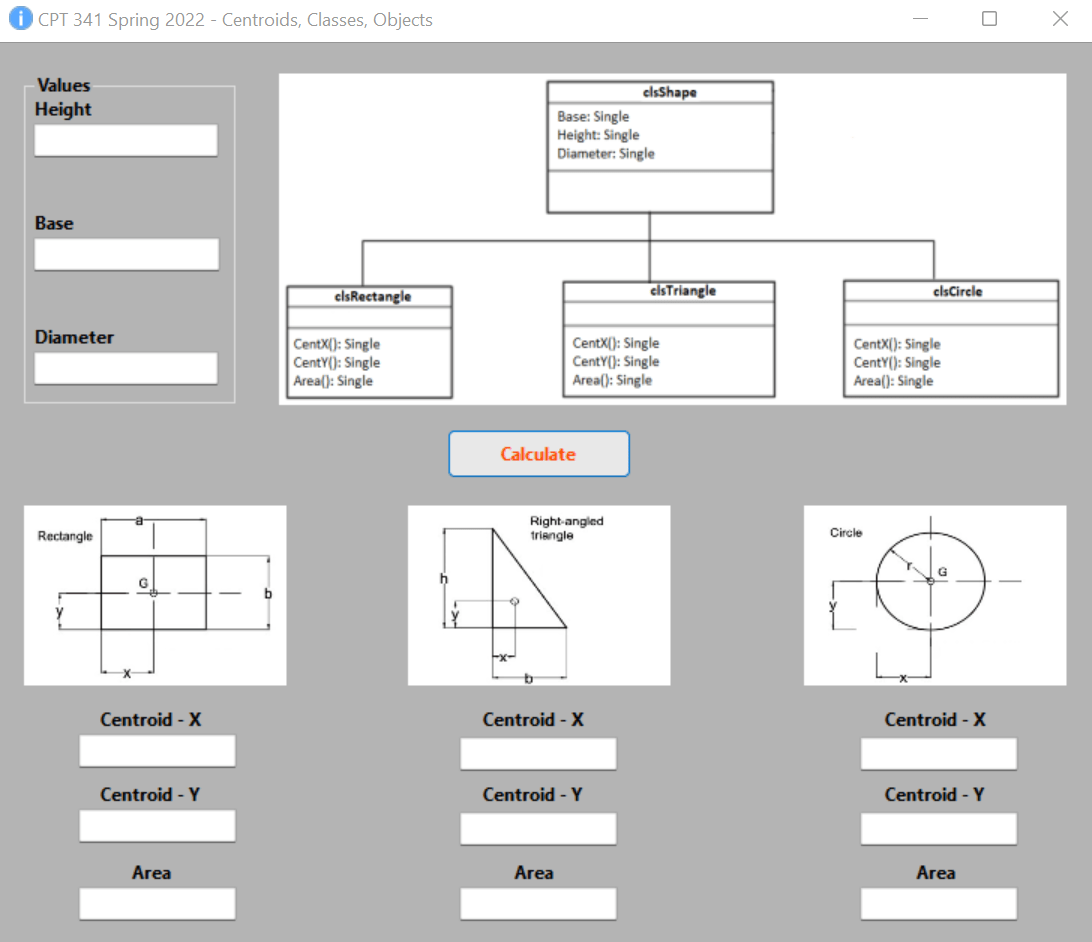Subtotal: $20.00
 CPT 341 VB.NET Project 5 | Student Database
$100.00
CPT 341 VB.NET Project 5 | Student Database
$100.00
 Develop a Windows Forms application that will generate a random key used to shift a string from one character to another.
Original price was: $60.00.$50.00Current price is: $50.00.
Develop a Windows Forms application that will generate a random key used to shift a string from one character to another.
Original price was: $60.00.$50.00Current price is: $50.00.
CPT 341 VB.NET Project 3 | OOP Centroids Area
Original price was: $60.00.$50.00Current price is: $50.00.
-17%Classes, Objects, Inheritance, Properties, Functions, ComboBox Control, Label Control
Develop 1 base class (clsShape) and 3 sub-classes (clsRectangle, clsTriangle, clsCircle) to be used for calculating center of gravity and area of the 3 common shapes in a developed Windows Forms App.
- Develop a Base (parent) Class named clsShape containing 3 Properties (Base, Height, Diameter)
- Develop an additional 3 derived sub-classes named clsRectangle, clsTriangle, clsCircle which Inherits the properties of the Base Class clsShape. For each of the derived classes, create 3 Functions to calculate the centroid (X), centroid(Y) and the Area
- In a developed Windows Form, create an instance (object) for each derived class named objRect, objTri, objCircle to be used for calculating both the centroid and the area.

 use Python In Minecraft, potions can be made and drank. When drank, they apply the corresponding...
use Python In Minecraft, potions can be made and drank. When drank, they apply the corresponding... 
 25% off with code “SUMMER”
25% off with code “SUMMER”

![(b) Modify the program in Q3(a), with the following new rules: - Players will need to win 3 games to become the overall winner. - Implement a penalty - for the player who skipped, entered an incorrect expression, or entered an expression that evaluated to the wrong result, will draw 2 random digits into their hand. - The player who loses the game will be awarded a "Skip" card in the next game. With the "Skip" card, the player can hit < Enter > to skip, without a penalty. - If not utilized, the "Skip" cards CANNOT be carried forward to the next game. Illustration of the "new" game on the left column, with the rules of the game explained on the right column: Enter player: Alan Enter player: Betty Enter player: Starting hand (number) of digits: 4 Let's play... Game 1 Round 1: Result 6 Betty's hand: [5,2,1,1] Enter expression: 5+1 Correct! Betty's hand: [2,1] Alan wins this game in 4 rounds!! Overall game score: Alan 1, Betty 0 Let's play... Game 2 Round 1: Result 5 Betty's hand: [3, 6, 5, 7, 'S'] Enter expression: Skipped with no penalty!! Betty's hand: [3,6,5,7] Alan's hand: [2,1,2,1] Enter expression: Skipped and 2 digits added to hand Alan's hand: [2,1,2,1,4,7] Betty wins this game in 5 rounds!! Overall game score: Alan 1, Betty 1 Let's play... Game 3 Round 1: Result 6 Betty's hand: [1, 2, 8, 7] Enter expression: 8-2 Correct! Betty's hand: [1, 7] Computer randomized the play sequence and will stay the same for every game/round End of game, if no overall winner, continue to play another game. Loser will be awarded a "Skip" card in the next game. "S" represents the "Skip" card awarded to Betty. No penalty for Betty as she has a "Skip" card. Hit < Enter > key to skip if cannot form an expression. In this case, the player who skipped will draw 2 random digits into their hand. End of game, if no overall winner, continue to play another game. Loser will be awarded a "Skip" card in the next game.](https://gotit-pro.com/wp-content/uploads/2023/10/1fa83cc6-5755-4d51-b5f6-f4335b49f1c8.jpg)





Madison Hayes –
It’s amazing how Gotit Pro Experts provided the instant help I needed to my questions and doubts. Now I feel the satisfaction of receiving a trustworthy guidance. Strongly recommend it!